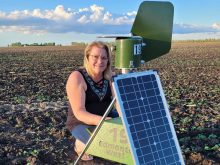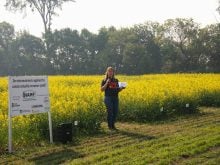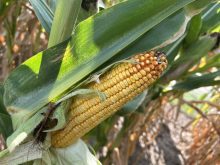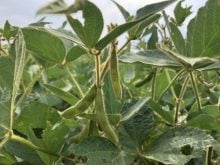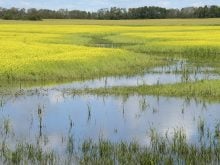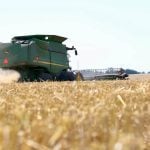Alberta farmers left more than 700,000 acres unseeded due to excess moisture, say crop insurance officials.Southern Alberta abandoned 450,000 acres when six weeks of heavy snow and rain kept farmers out of fields that normally grow high value crops like potatoes, dry edible beans, corn and sugar beets.Merle Jacobson of Alberta Farm Financial Services said insurance adjusters are working in the region where farmers could receive $25 to $70 per acre to cover input costs.In flooded areas, people may try to seed cover crops. Most farmers in the region will probably be eligible for cash advances under the federal AgriStability program.Seeding was delayed across the region and crops either failed to germinate or fell well behind schedule. Low lying areas are boggy while crops on higher ground look pale due to a lack of nitrogen. Others have rotted.The problem started in the north slopes of the Cypress Hills with record runoff that flooded Ross Creek, a normally quiet tributary in southeastern Alberta. In mid-June, local roads, fields and property were damaged.A weather station in the Cypress Hills region recorded 600 millimetres of precipitation since April 1.“It had the highest flow on record and that is with 90 years of records. That was due to all the precipitation that snagged up in the Cypress Hills,” said Rick Wright of Alberta Agriculture.“That particular amount of rainfall isn’t unheard of for the event that caused the problem. It was the conditions leading up to the event,” he said. “What really caused the big trouble was the snowstorm.”Some regions had as much as a metre of snow in April. When the rain arrived, the ground was already saturated.Other southern stations have had twice the normal levels of moisture. The normal for the south at this time of year is 100 to 120 mm of water but up to 300 mm have arrived since April 1. Bow Island, Grassy Lake and Etzikom rain gauges have reported 230 to 300 mm since then. Spring normally sees 125 mm.
Read Also

GSI’s GrainVue allows for remote grain bin monitoring
GSI’s GrainVue bin monitoring system allows producers to monitor grain conditions inside the bin and automate any drying, cooling or aerating that is needed to keep grain in peak condition.




